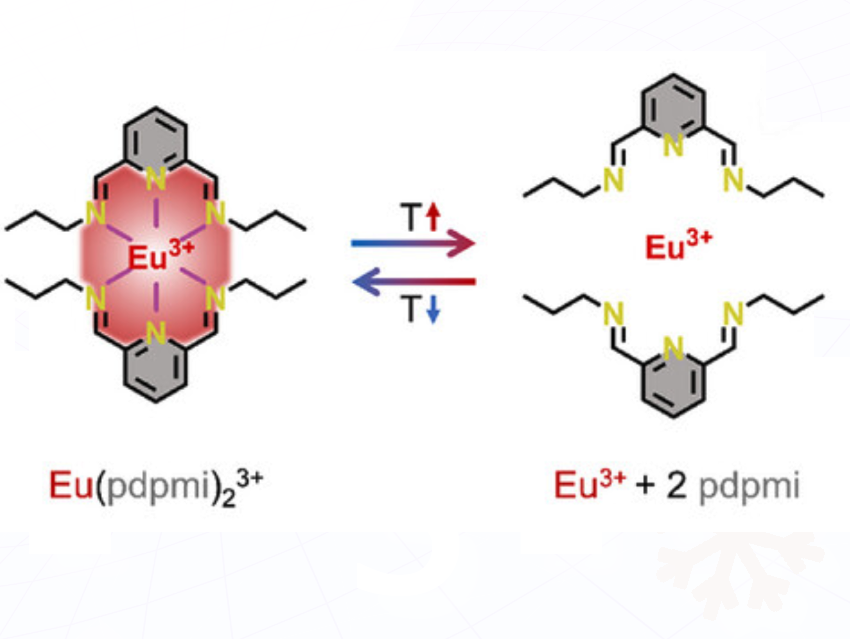Ximin He, University of California, Los Angeles, USA, discusses a paper that she and her colleagues recently published in Angewandte Chemie, in which they introduce a supramolecular polydimethylsiloxane (PDMS) with dynamic coordination crosslinks that enables a coordination motorized oscillator, or CoMO, capable of harvesting low-grade thermal energy.
What did you do?
We created a new type of soft material that can move continuously by harvesting tiny amounts of heat from the environment, like warmth from a hand, sunlight on a surface, or heat from electronics. Inspired by bacteria that move using dynamic ion binding, we designed a material whose internal chemical bonds are sensitive to and capable of repeatedly binding and unbinding with small temperature changes. This molecular process is translated into steady mechanical oscillation and locomotion, enabling untethered soft robots to move autonomously using only ambient energy.
Why are you interested in this?
Natural organisms can convert tiny environmental energy fluctuations into continuous motion, while man-made machines typically need external power or complex controls. We aim to bridge this gap by creating materials and mechanisms that allow synthetic systems to operate more like living organisms, which are simple, autonomous, and powered by the energy already around them.
What is new and cool about your work?
We introduced a dynamic bonding mechanism that turns microscopic bond switching into macroscopic motion without external control or high-intensity energy. The result is a soft motor and robot that moves by itself, without batteries, wires, or programmed cycles, just from naturally occurring low-grade heat.
It is the first demonstration of converting molecular-scale reversible bonding into practical mechanical work and locomotion powered by ambient energy.
What are your key findings?
A supramolecular polymer network with highly dynamic metal-ligand bonds can amplify tiny thermal fluctuations into continuous mechanical oscillation, and we proved its decisive role in generating the oscillation. But the principle is tunable and general, demonstrated across multiple metals and structures.
What specific applications do you imagine?
In the near term, this platform could enable battery-free soft sensors, actuators, and environmental robots that operate in remote or resource-limited settings.
In the long term, we envision autonomous soft machines that mimic biological energy strategies, such as robots that can explore natural environments, monitor infrastructure, or assist in biomedical settings by harvesting gentle energy sources like body warmth or sunlight.
What part of your work was the most challenging?
The biggest challenge was striking the right balance between bond dynamicity and material stability. The coordination bonds needed to be weak and responsive enough to react to tiny temperature fluctuations, yet strong and reversible enough to sustain thousands of actuation cycles. Achieving this precise balance in a functional elastomer while maintaining mechanical robustness required careful molecular design and systematic tuning over the recipe and oscillator structures.
Additionally, translating this chemical principle into a soft robotic system was non-trivial for us as chemists. The design, fabrication of the soft robots introduced new engineering challenges. We are glad this worked out in the end through our collaboration.
Anything else you would like to add?
This work opens a door to “living-style” motion in synthetic systems, such as machines that sustain themselves using ubiquitous, low-density energy. We hope it encourages broader exploration of dynamic chemical principles for powering autonomous soft matter and robotics.
Thank you very much for sharing these insights.
The paper they talked about:
- Dynamic Bonding Enabled Ambient-Driven Motors,
Muqing Si, Zixiao Liu, Chi Chen, Wei Lu, Depeng Liu, Pengju Shi, Yi Yu, Yichen Yan, Ximin He, Tao Chen,
Angew. Chem. Int. Ed. 2025.
https://doi.org/10.1002/anie.202518011
Ximin He is a professor in the Department of Materials Science and Engineering at the University of California, Los Angeles, USA.
Also of Interest


